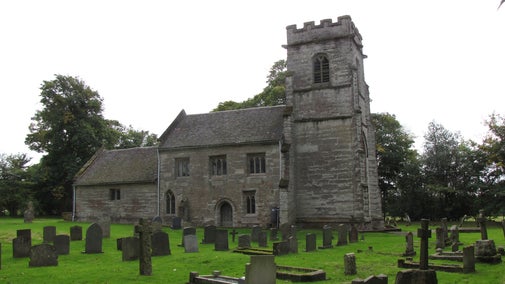1860
Georgiana, Lady Chatterton
Henrietta Georgiana Maria Iremonger was born in 1806, the daughter of Reverend Lascelles Iremonger, a senior member of the clergy at Winchester Cathedral. The family moved frequently living with different relatives, commonly with her aunt Margaret and uncle William Pitt MP, who was to become Prime Minister. King George III often dropped in for luncheon with her uncle.
In 1824 Georgiana ‘came out’ by being presented at Court to the King and Queen. During her debutantes’ ball at Arlington Street, she met Sir William Chatterton, many years her senior, whom she married when she was just 17. The couple spent the early years of their marriage at his home at Castle Mahon, County Cork, Ireland and Winchester with Georgiana’s parents, spending winter months abroad.
After the death of Georgiana’s father, the couple moved to Seamore Place in Mayfair along with her mother. When in town the Chatterton’s were regular guests of King William IV and when in the country Georgiana often visited Princess Victoria at Tunbridge Wells. In 1837, Georgiana anonymously published her first novel Aunt Dorothy’s Tales. This was followed by her second novel, Rambles in South Ireland, in 1839, the first edition receiving great acclaim and selling out within weeks.
Georgiana, now in her mid-thirties and having no children of her own, took great joy in having Sir William’s niece, the 12-year-old Rebecca Orpen, to stay with them regularly. The potato blight, or ‘Great Famine’, which hit Ireland meant financial ruin for Sir William and the couple moved back to England and finally settled in Rolls Park in Essex. Rebecca was now living with them and the watercolours she painted depict this as a very grand house. Three years later, when Georgiana was 49, her husband Sir William died. They had been married for 31 years.
Two years later the worst of Georgiana’s grief had now passed, and she began to entertain again. She and Rebecca attended many parties, concerts and other social occasions together. It was at a private concert that Georgiana first met Edward Heneage Dering and they continued to meet at other events accompanied by Rebecca.
Georgiana was now 53, Rebecca 29 and Edward Dering 33. Edward went to Georgiana, and it is said that his intention was to ask her permission to marry Rebecca. Georgiana, being supposedly hard of hearing, misheard and thinking it was herself being proposed to, accepted. Edward, being an honourable man, accepted the situation and married her. The pair now became a trio which Rebecca christened the ‘Three Little Bears’. They travelled widely round the country and abroad.
During this time Georgiana became interested in Roman Catholic doctrine to the extent that she started a correspondence with Doctor, later Cardinal Newman. All three of them were received into the Catholic church in 1865 in the presence of Newman.
The trio became the Quartet in 1867 when Rebecca married one of Edward’s military friends, Marmion Ferrers. The two couples moved to Wooton Wawen Hall in Warwickshire, as Marmion’s home, Baddesley Clinton, which he had inherited in an impoverished state, was undergoing repair works, which were probably paid for out of Georgiana’s considerable literary earnings.
When the works were complete, the two couples moved to Baddesley, which became a haven for Georgiana during the last years of her life. She would set up easels in the Great Parlour and paint with Rebecca, whilst Edward wrote, and Marmion walked his estate.
One interruption to this harmonious life was Georgiana’s struggles with her new faith which had begun a few years earlier. Her doubts about aspects of the Eucharist caused her distress that Cardinal Newman could not ease. Furthermore, the Catholic history of the Ferrers family and Baddesley made her feel she was betraying their faith. Cardinal Newman was shocked to discover Georgiana had left the Church, and it’s likely that Georgiana worshipped at the Anglican church of St Michael. She spent a great deal of money making alterations to this church, which can still be viewed a short walk from the house today.
Georgiana continued her writing and published a book approximately every two years. These included over 25 novels, translations of Plato and Aristotle from ancient Greek which received great critical acclaim, religious works, poems, diaries and letters. She painted beautifully in both oils and watercolours as well as creating detailed sketches from her extensive travels. She spoke several languages, composed music and played the harp - for the future Queen Victoria no less.
She continued to correspond with Cardinal Newman and was eventually reconciled with the Church. A result of this was the creation of the Chapel you can see today in the house where Georgiana and her friends attended Mass. The triptych hanging to the left of the altar today was painted by Georgiana.
Georgiana died peacefully in 1876 at the age of 70. As a highly successful author, she died a very wealthy woman leaving a sum in the excess of £4 million in today’s money to various trust funds. She was buried at the local Catholic Church of St Francis of Assisi where the other three members of the Quartet would also be laid to rest.
Many of Georgiana’s books are still available over 150 years since their first publication. She struggled with a pious upbringing that was surrounded by excess; her moral sense perceived, ‘the atmosphere of sin which hung about this great city’. She was to draw heavily on her own experiences of high society in her novels and was often critical of it. Her activism can be seen through her break from the faith of her family, in her support of Sir William, her influence on Rebecca, the restoration of Baddesley, and through her own ‘masculine intellect’. We cannot say with any certainty that Baddesley would have survived without Georgiana.












